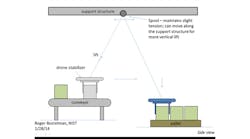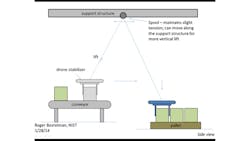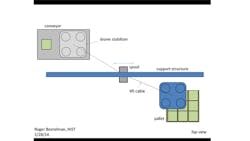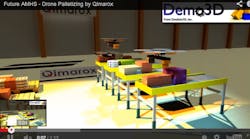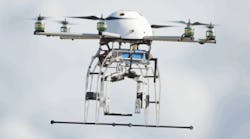The warehouse drone video we posted for your comments didn’t impress one of your fellow readers. “Pure infatuation,” he stated. “It’s possible in theory, but too expensive, too many variables and too much liability.”
Those comments never deter innovators. They motivate them. I’m sure automated guided vehicles (AGVs) had plenty of detractors before they came into wide usage and look at them today. They’re used in both manufacturing and distribution. In fact technologists are still trying to improve these things, as I mentioned in my last blog. One of them is Roger Bostelman, engineering project manager at The National Institute of Standards and Technology (NIST) and MH&L advisory board member. His current project involves developing new test procedures for AGVs that could open the door for further innovations.
After seeing the drone video posted in our blog, Roger e-mailed me saying that not only is this vision practical, it’s probably more doable than the outdoor drones that Amazon’s Jeff Bezos envisions. A warehouse would be a more controllable environment, where factors such as flight levels, air currents, untethered power, logistics, and load capacity would be easier to test and perfect.
“However, it will take time for demonstration of real systems that are reliable and can position loads on pallets as shown in the video,” he added. “Safety aspects of nearby humans complicates indoor drone use tremendously.”
But as I said, those constraints don’t stop innovators. Roger has already started thinking through these challenges and drew up a way for people to further test drone feasibility for the warehouse.
His methodology is illustrated below. It starts with a pendulum with vertical lift provided by a ceiling-mounted cable (also carrying power and signals). Drone rotors could provide placement and stability for a test load. He didn’t dream this up, he actually based the idea on a similar concept NIST used with rescue robots, or “rotary-winged aerial reconnaissance drones.” A RoboCrane stabilizes crane-suspended loads.
These haven’t been applied in a plant or warehouse, he told me, but if they were they’d require a series of safety and performance metrics and evaluations. They were the subject of a workshop eight years ago in which NIST and Homeland Security's Science and Technology Directorate demonstrated urban search and rescue robots at the Montgomery County (Md.) Fire Rescue Training Academy in Rockville, Md. Sensor-laden rotary-winged aerial reconnaissance drones were used to detect injured people and trace elements of radiation in simulated natural disaster or terrorist attack conditions.
Similar to the AGV improvements Roger and his team are trying to inspire today, these workshops were designed to help robot developers refine their designs, better understand robot and sensor performance requirements, and identify robots best suited for specific emergency situations.
We need more people like Roger—people who ask "why not" instead of "why"—then look for ways to answer their own question.
